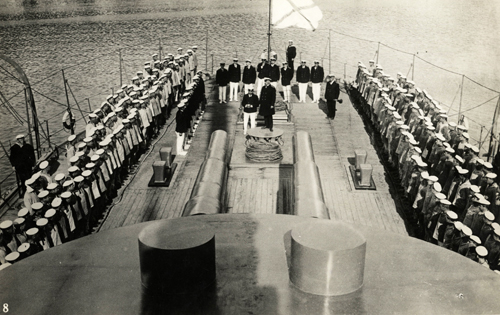Director: Sergei M. Eisenstein
One of the important thing this film does is make you think about the difference between filmmaking as art and filmmaking as propaganda. Can a film that is obviously propaganda be considered art? Battleship Potemkin gives a lot of credibility to the "yes" side. It's a film that is explicitly revolutionary propaganda recreating a rebellion by a Russian battleship against their Tsarist officers. But it's also a very powerful film that used film editing in a way that was never used before, and those techniques only made the film much more powerful. The film is above all a testament to the power of film as an art form. It's a great example of what film really can do and the extraordinary power it can over those who watch it. Film can inspire and it can excite and Eisenstein was one of the first who really took advantage of this power (Joseph Goebbells also learned this power from this film, reportedly).
While the film is known more for being influential, especially in its editing techniques most famously displayed in the Odessa steps sequence, there are many great things about this film that still stand the test of time. The film is only about 70 minutes long or so, so the film doesn't try to build characters as people, what it does is create symbols within the characters. There is no individual, everyone represents the group, and if everyone rose up together against oppression, freedom can be won. One of things I liked most about the film is its message that soldiers are not just pawns of a government. They are citizens of their country like everyone else, and so they have the ability to rebel against their commanding officers and stand side-by-side with their non-military brethren. Sure the movie is famous more for its influence, but even today, almost 90 years later, it is still a powerful piece of work.
Grade: A-

No comments:
Post a Comment